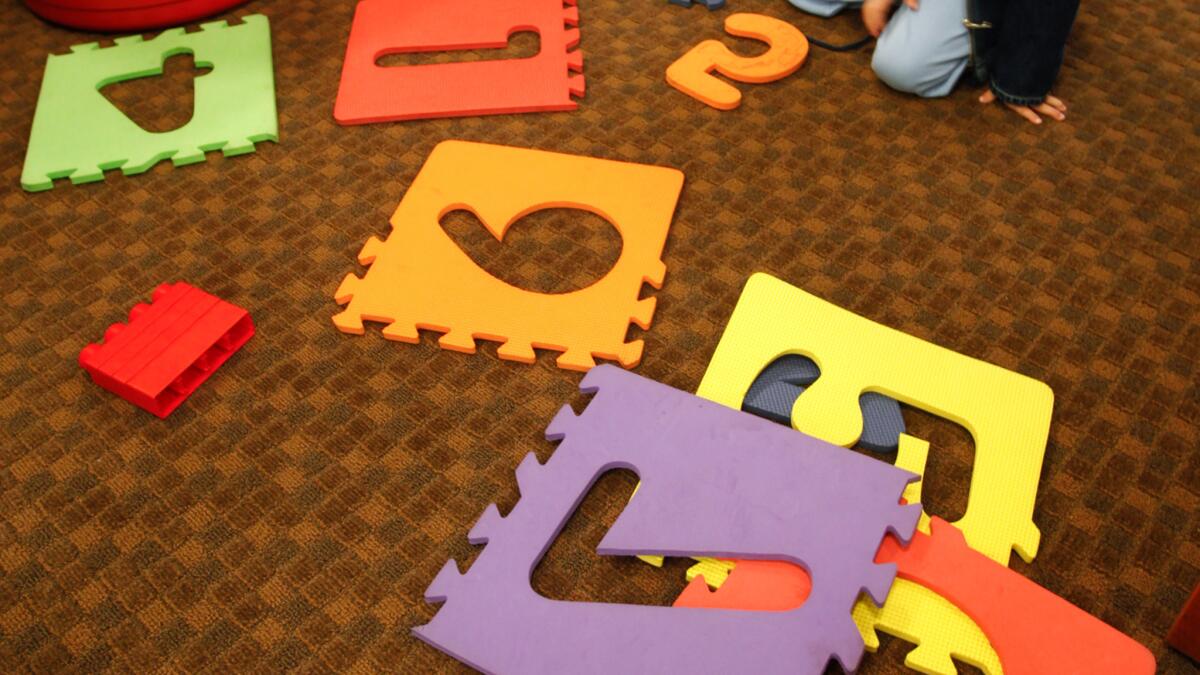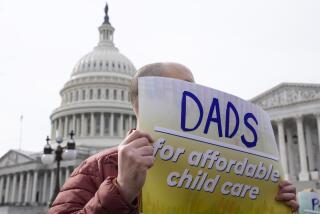The people taking care of American children live in poverty

The people paid to watch Americaâs children tend to live in poverty. Nearly half receive some kind of government assistance: food stamps, welfare checks, Medicaid. Their median hourly wage is $9.77 â about $3 below the average janitorâs.
In a new report, researchers at UC Berkeley say that child care is too vital to the countryâs future to offer such meager wages. Those tasked with supporting kids, they say, are shaping much of tomorrowâs workforce.
For the record:
11:20 a.m. July 18, 2016An earlier version of this article misspelled the last name of Marcy Whitebook, director of UC Berkeleyâs Center for the Study of Child Care Employment, as Whitebrook.
âEconomic insecurity, linked to low wages, remains endemic among those who care for and educate young children from birth to elementary school,â the authors wrote. âThis condition has endured despite a much-altered landscape in which developmental scientists, economists, and business and labor leaders have widely recognized the importance of early care and education in shaping childrenâs development, promoting the health of families, and building a strong economy.â
In the United States, roughly 2 million adults make a living by caring for and educating more than 12 million children, from infants to 5-year-olds. Last year, 46% of child-care workers were part of families enrolled in at least one public safety net program, compared with 26% of those in the broader workforce. Low pay contributes to a revolving door of staffers. The average annual turnover rate among early childhood education staffers, for example, hovers around 30%.
Wages remain paltry even among the college-educated workforce. Early childhood education is the college major that yields the lowest lifetime pay.
Marcy Whitebook, director of UC Berkeleyâs Center for the Study of Child Care Employment, who co-wrote the report, said these economic conditions arenât ideal for toddlers who require both environmental stability and the constant attention of their caregivers. Plus, highly skilled workers might turn down a day-care job for brighter financial opportunities elsewhere.
The National Institute of Child Health Development labels the majority of Americaâs day-care programs âfairâ or âpoor.â Just 10%, the organization said, offer high-quality care.
âWeâre entrusting children to people who are really struggling to feed their own families,â Whitebook said. âTheyâre managing all this stress, which is distracting to all the important work they have to do.â
Not that financial stress always translates to poor workplace performance. But study after study has found that anxiety about money can cloud thoughts, thwart concentration and zap energy.
The danger can be more subtle than, say, failing to remove a choking hazard from a playroom. If a distracted worker doesnât interact with a baby for an hour or two, itâs unlikely that alone will damage the childâs health. Repeated periods of no contact, however, could have adverse long-term effects.
Neuroscientists say the foundation of our attention span, memory and impulse control is largely laid before age 3. Jack Shonkoff, director of Harvard Universityâs Center on the Developing Child, wrote in a 2000 study that early interactions build the way we come to think and react. If a babyâs environment is volatile or âunresponsiveâ â meaning no one is touching or talking to the baby for long periods â stress hormones surge, disrupting the mental growth process. The child is more likely to experience anxiety or depression as an adult and less likely to stay in school or out of jail.
âChildren in settings with high turnover,â Whitebook said, âyou see the impact on them, in terms of language and social development.â
The economics of child care in the U.S. remain broken, she said. Parents are spending mortgage-like sums to get their toddler a spot at a local day care, even if its quality is unclear. Providers arenât profiting much, thanks largely to regulations that exist to keep kids safe.
The reportâs recommendation: States should pour more money into child care, since the market alone isnât boosting worker wages. Public money for centers, for example, can give owners the power to raise pay, attracting more skilled and less distracted employees.
Paquette writes for the Washington Post.
To read the article in Spanish, clic here
ALSO
Stocks rise, lifting S&P 500 to record-high close
Why young women are still less likely to negotiate a job offer
Amazon Prime Day is Tuesday. Will the deals live up to the hype?
More to Read
Inside the business of entertainment
The Wide Shot brings you news, analysis and insights on everything from streaming wars to production â and what it all means for the future.
You may occasionally receive promotional content from the Los Angeles Times.










